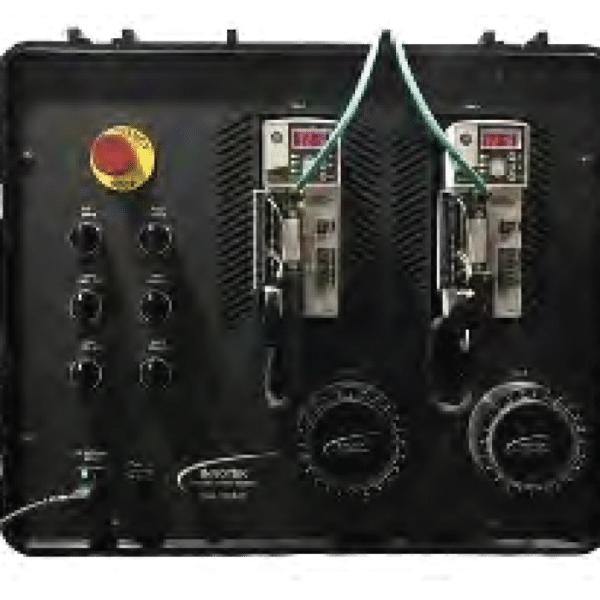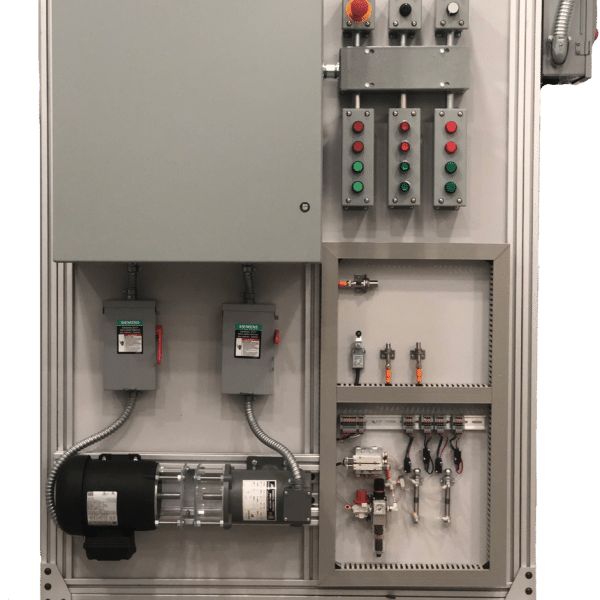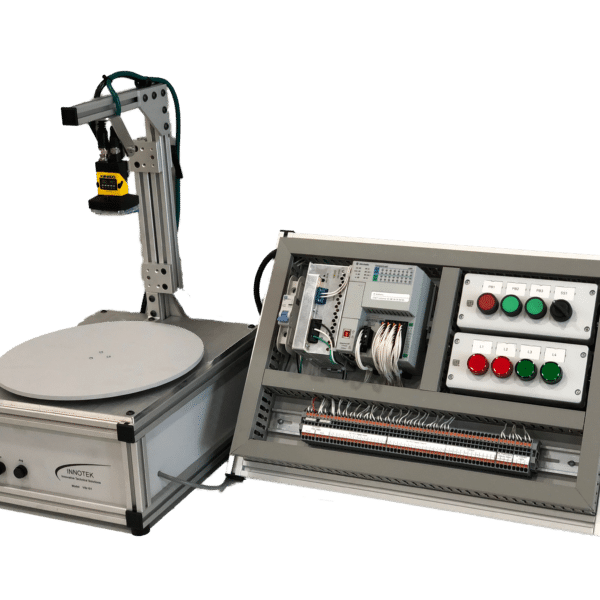Mechatronics
Mechatronics is the big-strange word that covers so much. The marriage of mechanical, electrical, computer and software skills in order to work with smart technologies, TOOLKIT prepares students for various career pathways within the ever-changing landscape of Mechatronics.
Students learn integrated systems that combine electrical technologies with mechanical technologies and computer programming for real-world skills that directly relate to modern jobs in manufacturing and automation.
Mechatronics sits at the intersection of mechanics, electronics, and computing, and is built on the idea of creating simpler and smarter systems. Toolkit provides the training systems that empower mechatronics technicians and specialists with the skill sets to thrive in contemporary, advanced automated manufacturing industries.
Electro-mechanical technologists and technicians combine knowledge of mechanical technology with knowledge of electrical and electronic circuitry. They operate, test, and maintain unmanned, automated, robotic, and/or electromechanical equipment.
Electro-mechanical and mechatronics technologists and technicians typically do the following:
- Read blueprints, schematics, and diagrams to determine the method and sequence of assembly of a machine or a piece of equipment
- Verify dimensions of parts, using precision measuring instruments
- Operate metalworking machines to make housings, fittings, and fixtures
- Inspect parts for surface defects
- Repair and calibrate hydraulic and pneumatic assemblies
- Use instruments to test the performance of electromechanical assemblies
- Use soldering equipment and hand tools to install electronic parts and hardware
- Operate, test, or maintain robotic equipment
- Analyze and record test results
They install, maintain, and repair automated machinery and computer-controlled mechanical systems in industrial settings, and also test, operate, and/or maintain robotic equipment at worksites. This equipment may include unmanned submarines, aircraft, or similar types of equipment for uses that include oil drilling, deep-ocean exploration, or hazardous-waste removal.
They average pay for someone with these skills is over $61,040.00.
Showing all 3 results
-
Servo (Drives) Motion Training System
The Servo Motion Training System provides participants with hardware allowing for hands-on experiments in setup,
configuration and programming and servo drives for rotary or linear motion. The system gives access to onboard input and
output devices in addition to providing connectivity for external devices.
The system can be purchased with a Motion-Capable PLC or utilized in combination with an existing motion-capable PLC.
Tabletop or Suitcase Form Factor
- 120Vac Power Entry
- Emergency Stop
- (3) Selector Switches (Enable, + Over-Travel, – Over-Travel)
- (2) Homing Sensors
- (2) Servo Rotary Axis
- (2) Servo Drives
-
Industrial Wiring Training System
The IW-201 Industrial Wiring Training System is a complete hands-on training solution for teaching the concepts of residential, commercial and industrial wiring in a compact and mobile classroom setting.
The Innotek Industrial Wiring Training System IW-201 allows students to study and practice electrical wiring skills like conduit bending, installing and wiring motor controls in a NEMA Electrical panel, terminating wires and choosing correct wire size, installing wiring into devices, and more!
The skills-based approach of the IW-200 is an invaluable tool for students studying/training to be electricians, industrial maintenance technicians, and/or advanced manufacturing operators, as it builds confidence through hands-on activities and competency-based exercises.
- Power Distribution, Wiring, and Devices
- Conduits and Enclosures
- Industrial Controls
-
Artificial Vision Training System
Toolkit’s VIS-101 Artificial Vision Training System provides a hardware training solution for introducing the fundamentals of artificial vision to students in mechatronics, automation, robotics, and industrial technology training programs.
The hands-on training system provides components that are used in common industrial applications, allowing participants to perform experiments in camera installation, electrical connections, and configuration of vision jobs via included software.
This Artificial Vision Training System will teach fundamental concepts around artificial vision cameras and technology and will then empower students to take their newly acquired skills to more complex tasks or apply to integrated systems.




